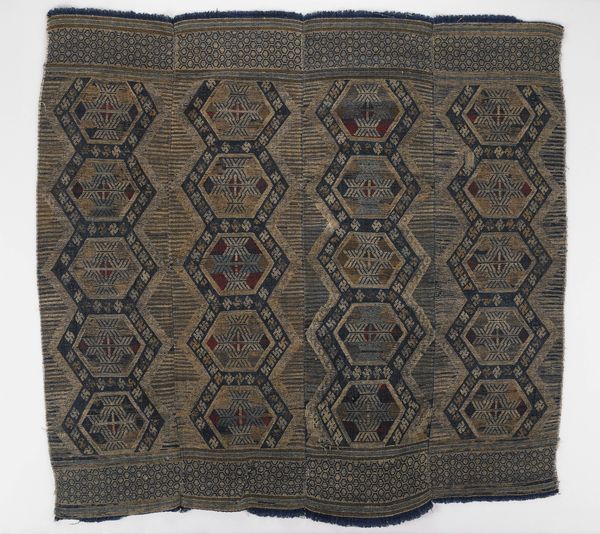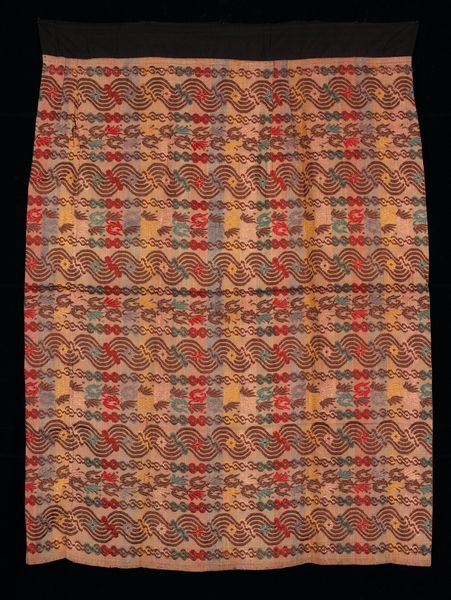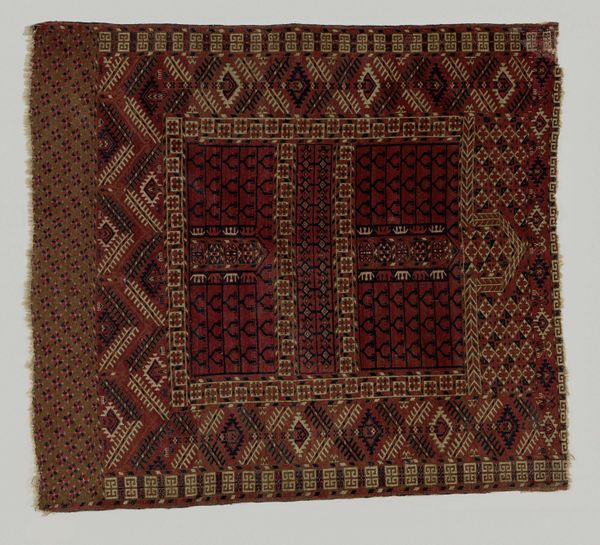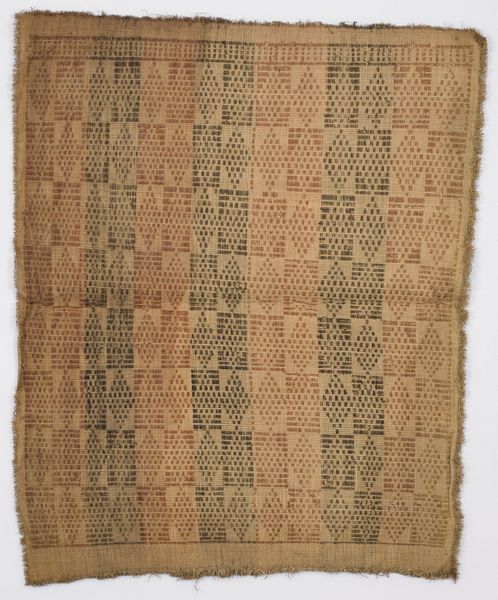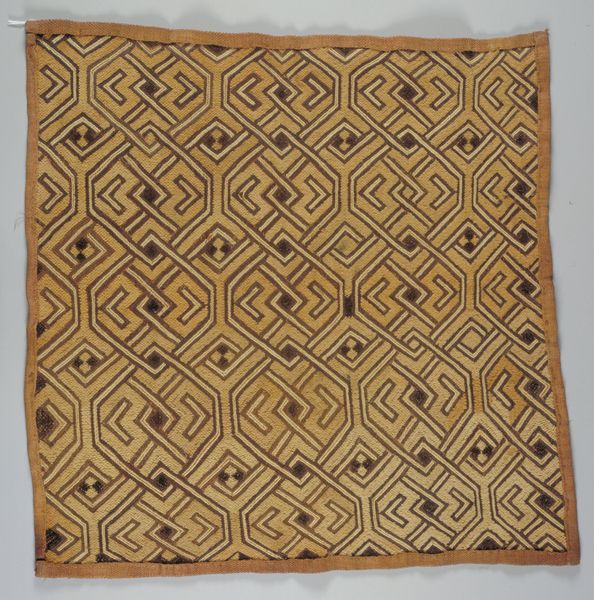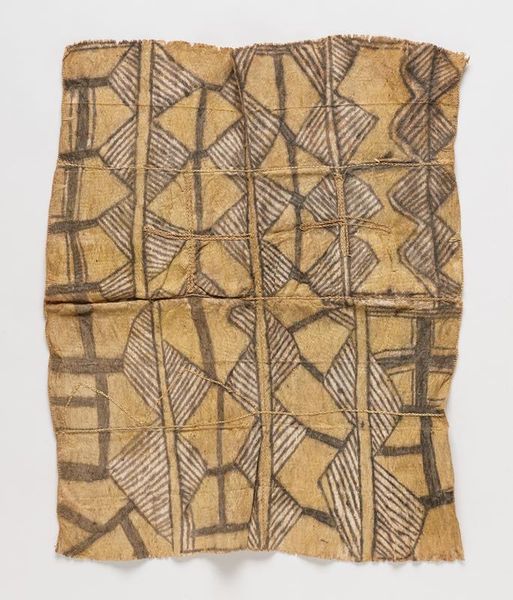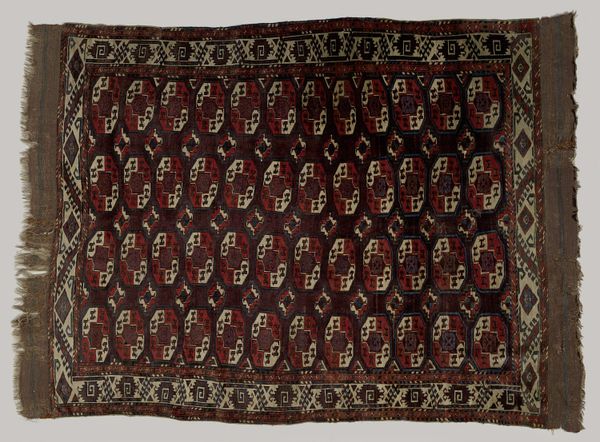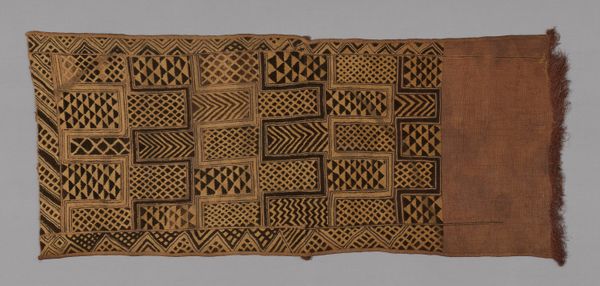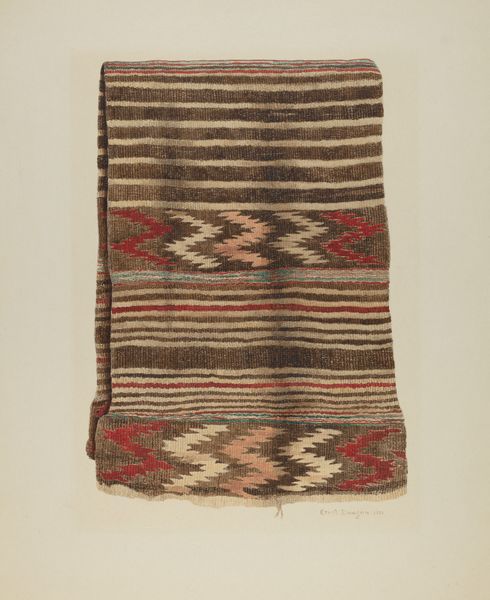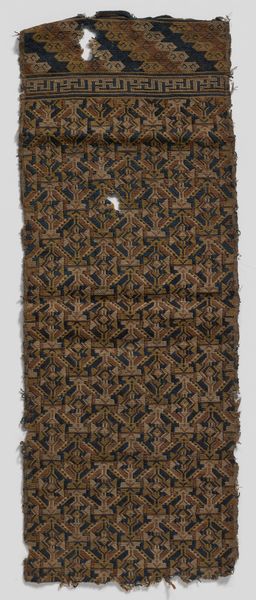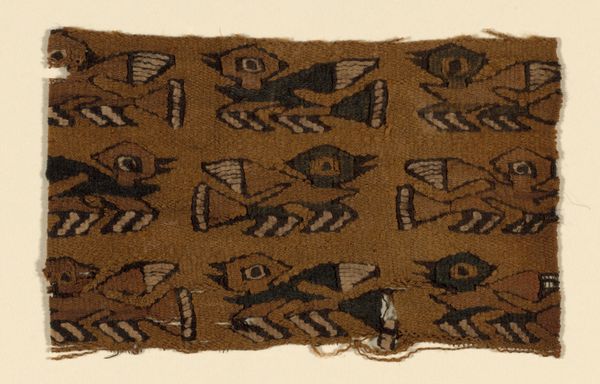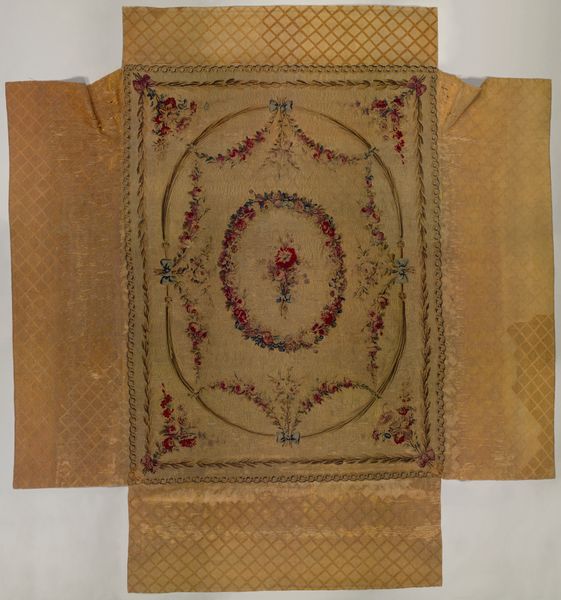
weaving, textile
#
natural stone pattern
#
weaving
#
textile
#
collage layering style
#
fashion and textile design
#
hand-embroidered
#
geometric
#
fabric design
#
repetition of pattern
#
pattern repetition
#
textile design
#
imprinted textile
#
layered pattern
#
indigenous-americas
Dimensions: 76.8 × 74.4 cm (30 1/4 × 29 1/4 in.)
Copyright: Public Domain
This tunic was woven in the Paracas region of Peru, a place known for its exceptionally fine textiles. It's made from cotton and camelid fiber – likely alpaca or llama wool – materials readily available to the Paracas people. The tunic's pattern consists of geometric diamonds and crosses, dyed in rich, earthy tones. Weaving on a backstrap loom would have been a slow, painstaking process. The weaver would have to carefully interlace the weft and warp threads to create the desired design, and the precision and skill required is evident in the crispness of the pattern. The materials used for the tunic, and the labor involved in its creation, suggest it was a valuable item. Clothing in Paracas society denoted a social standing, and this tunic likely belonged to someone of importance. It is a testament to the weaver's artistry, but also a material record of the Paracas culture and its values.
Comments
No comments
Be the first to comment and join the conversation on the ultimate creative platform.
